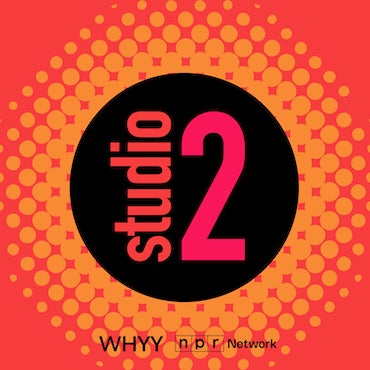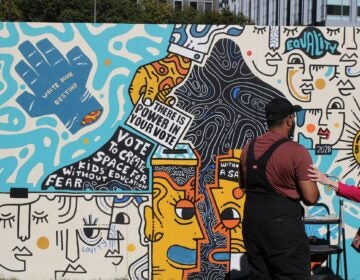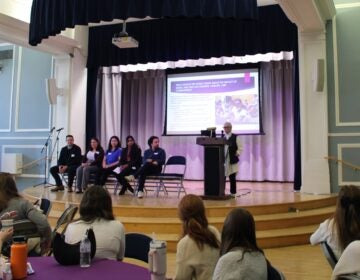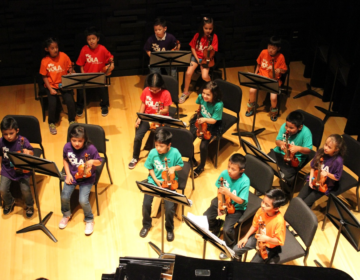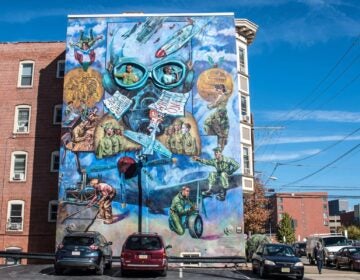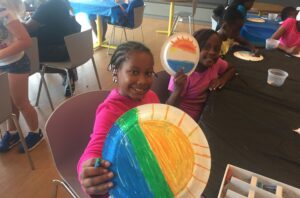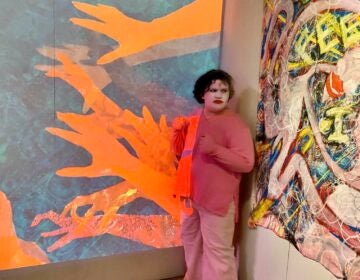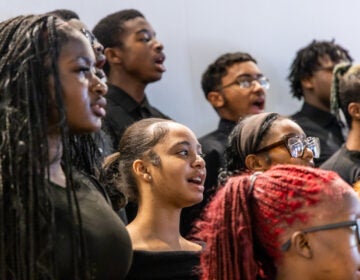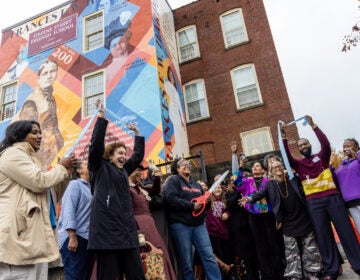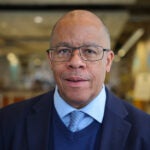Mural Arts’ after-school programming prepares students, heals communities
Founded in 1984, Mural Arts Philadelphia has created more than 4,000 murals. The nonprofit organization also helps kids hone their artistic and social skills after school.
Listen 1:03
Art in the advanced class at Mural Arts Philadelphia. (Stephen Williams/WHYY)
From Philly and the Pa. suburbs to South Jersey and Delaware, what would you like WHYY News to cover? Let us know!
Public art, such as creating murals, can offer many benefits to a community, advocates say. It can help revitalize or heal a community. It can give a voice to the voiceless.
For students, it can have even more benefits — teaching them technical art skills, helping them learn to use technology such as tablets and digital cameras, building self-confidence and fostering teamwork.
Mural Arts Philadelphia was created in 1984 under then-Mayor W. Wilson Goode, as a small program with the goal of cleaning up graffiti in the city.
Today, 41 years later, it is much more — creating more than 4,000 murals and earning the city the title of “Mural Capital of the World,” according to the Philadelphia Conventions Visitors Bureau, which says it is the nation’s largest public art program.
Some of the iconic murals include “South Philly Musicians,” one of the Phillies in South Philly, another that celebrates the Negro Baseball League in West Philly. There are murals of famous Philadelphians like jazz musician Grover Washington Jr. and former 76ers basketball great Julius “Dr. J” Erving.
‘Pathways … to a career’
“Our mission is to provide free, high-quality, out-of-school arts programming to Philadelphia’s young people, particularly in communities that have been historically underrepresented,” said Michelle Nugent, Mural Arts’ director of arts education. “We aim to foster creative expression, build artistic skills and then provide pathways for young people to a career in the arts and the creative economy.”
Mural Arts serves about 2,500 students a year in its after-school programs, she said.
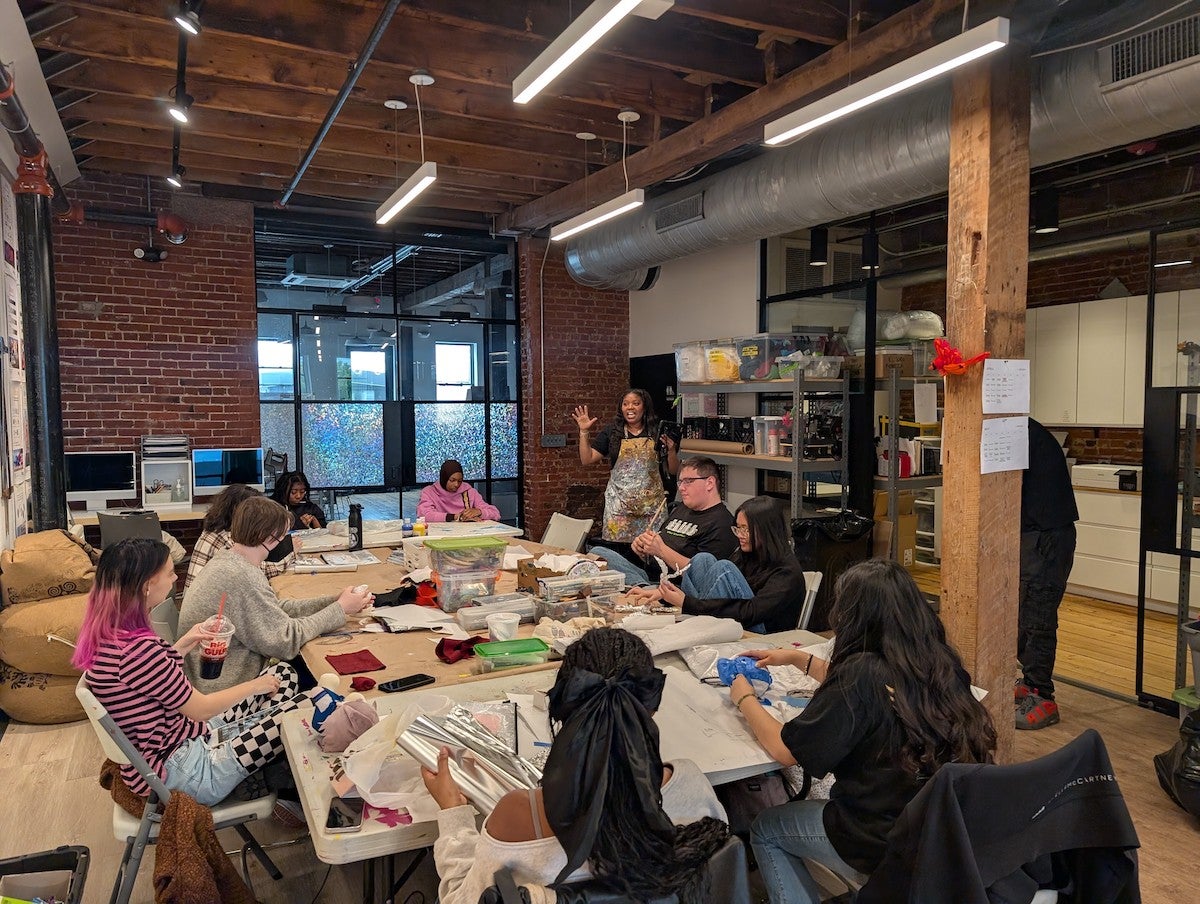
In 2023, the nonprofit had a budget of $14.7 million, hired more than 250 artists, entertained 18,000 people through tours and programs and dedicated 80 projects, according to its annual report for the year.
It receives funding from the city, the National Endowment for the Arts and a host of organizations and individuals.
“Our curriculum blends technical art instruction with critical thinking, storytelling and civic engagement. We have a program called Arts Integration, where we pair a teaching artist with an in-school classroom teacher to integrate into our core academic subjects,” Nugent said. “That is a great opportunity for a young person who may not, for instance, excel at math, who has the opportunity of boosting up their grades by working on something that gets their creative juices flowing. It provides another outlet for them to be able to explore other ways of thinking that are more approachable or perhaps more engaging.”
An instructive story
One statistic points out the enduring value of the program: 50% of students at Mural Arts become instructors.
Timell Floyd-Sherard is one of them.
An assistant teaching artist at Mural Arts Philadelphia, Floyd-Sherard said he began his relationship with the group when he was a 16-year-old ninth grader at William L. Sayre High School in West Philadelphia.
Now 27, Floyd-Sherard has worked at Mural Arts for about four years. He always wanted to be an artist, he said.
“I was looking for an after-school arts program and Mural Arts happened to be in my high school,” Floyd-Sherard said. “We had a lot of activities and field trips. We had visiting artists come in and show us how to do artwork.”
One of the murals he worked on while a student at Mural Arts was at Elmwood Park, in Southwest Philadelphia, which brought attention to the problem of too much plastic waste in the city.
At Murtal Arts, Floyd-Sherard said he was able to hone his technical art skills, learning how to use different mediums, such as paint, watercolors and different types of markers.
“I specialize in visual arts, photography and Photoshop and am pretty adept at 3D art, working with popsicle sticks or balsa wood,” he said.
Eylydia Knight, 17, is a senior at Science Leadership Academy High School. She is currently in the Mural Arts’ advanced class and agreed with Floyd-Sherard.

In addition to the technical art skills she learned while working on a project to decorate a community free-food fridge, she said she also learned soft skills such as communications and teamwork, and became more confident in the process.
“I am passionate about art. It’s helped me find myself. I feel like emotion is the language of the soul and art is here to help us translate it so that others can understand,” Knight said. “As for my plans after high school, I’m planning to study architecture in college.”
She joined the program in 2022, when she was in middle school and said her experience there, and the portfolio she is building with Mural Arts, will help launch her college career.
Natalie Gearin, program manager of the advanced class, said it is designed to provide these exact future benefits.
“They are really interested in honing their skills, whether it be for college or professionally,” she said.
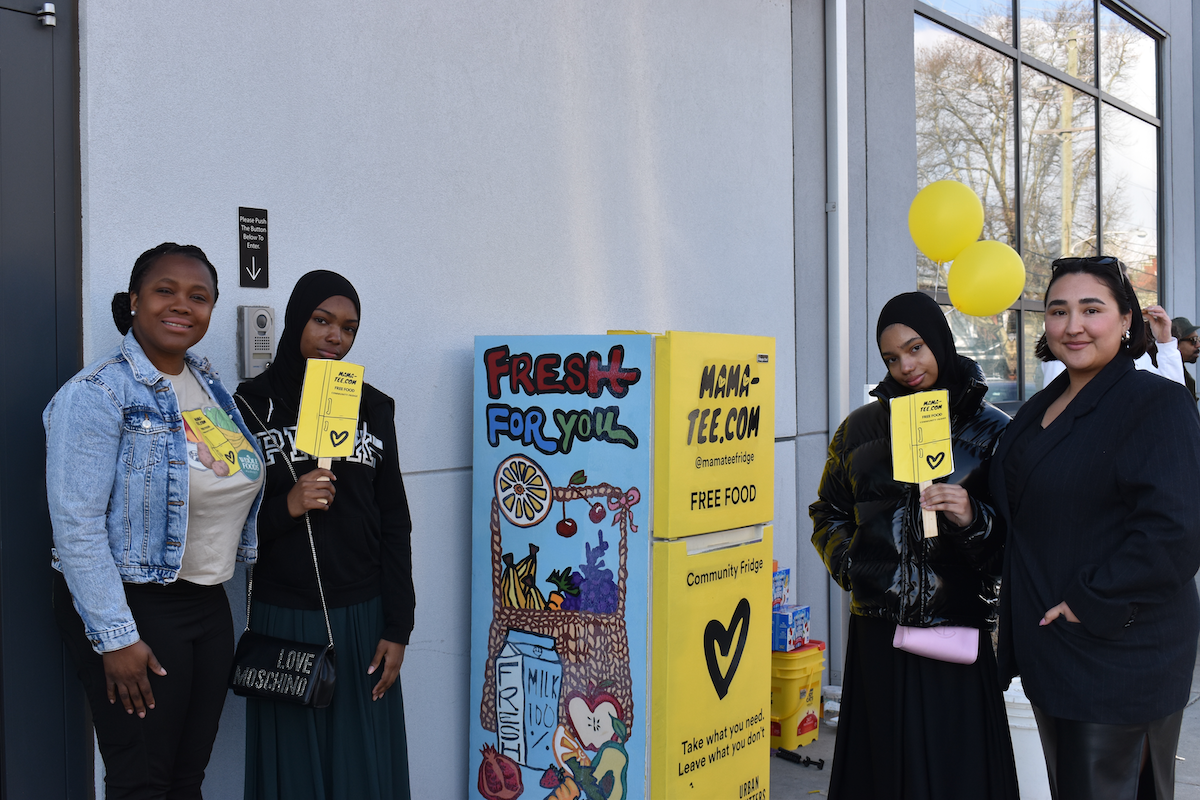
The students in the program are surveyed, she said, to better understand how the technical art skills they have learned, along with soft skills such as communications, collaboration and use of tools and technology, are beneficial to their college and career aspirations.
“We trend positive on those questions. With the surveying that we do, we try to measure a lot of things,” Gearin said. “We are trying to measure technical proficiency.”
Student arts exhibit
Currently, Mural Arts serves young people across the city at about two dozen public schools, parks and recreation centers, along with the Juvenile Justice Services Center and the Achieving Independence Center, which serves young people in the foster care system.
“We are in various places around the city working with a wide variety of young people,” Nugent said.
Each year, Mural Arts holds a student arts exhibit to display their work.
“We are transforming our gallery space into an immersive experience created entirely by the young people in our program,” she said. “Students in our program gain artistic skills, obviously, but we also see an increase in confidence in the young people in our program. We provide a scaffolding that allows them to build their skills and build their technique and feel more confident in the work that they put out there.”
Christopher Emdin, a professor of science education at Columbia University’s Teachers College, advocates using art and music to teach math and science.
“Any public mural requires deep scientific, mathematical and artistic knowledge,” Emdin said. “You have to know what the background is that you are going to paint on, you have to know what aerosol you are going to use, you have to understand the law of physics to understand the size and scope of it.”
Public art also benefits the community, Emdin said, especially when it can participate.
“Public art in urban communities serve as opportunities for creative artists who otherwise don’t have a platform, who don’t get invited to museums and are not perceived as legitimate artists to have a platform, or a gathering space where they can feature their work,” Emdin said. “When you have artists that don’t have a voice, you have people who have tendencies to engage in problematic behavior. Public arts serve as gathering spaces for communities who don’t have access to museums or other gathering.”
A 2022 study by the Urban Institute showed that public art created with local community input and placed in that community, such as murals, can have a positive impact on well-being and public safety and serve as a strong community tool.
In 2018, the mural “American Tableau” was dedicated at Philadelphia’s Corporal Michael J. Crescenz Department of Veterans Affairs Medical Center to celebrate the lives and sacrifices of U.S. veterans.
Mural Arts artist James Burns collaborated with a group of veterans and the Warrior Writers at Impact Services for more than a year to create the work, which was a partnership between Mural Arts, the city of Philadelphia, the U.S. Department of Veteran Affairs and the Veterans Empowerment Center.
The mural depicted veterans’ lives before, during and after their service. Many VA staff served as models for the mural, which also included the likenesses of Crescenz’s and Burns’ fathers, who were both veterans of the Vietnam War.
Many of the veterans who worked on the project suffered from post-traumatic stress disorder, or PTSD, but described the project as transformative, according to an article by the National Education Association.
“This mural made us feel like we matter,” said David Allen, a veteran of Operation Desert Storm who worked on the mural, in the article. “I think it’s important to our mental health.”
Editor’s Note: This story is part of a series that explores the impact of creativity on student learning and success. WHYY and this series are supported by the Marrazzo Family Foundation, a foundation focused on fostering creativity in Philadelphia youth, which is led by Ellie and Jeffrey Marrazzo. WHYY News produces independent, fact-based news content for audiences in Greater Philadelphia, Delaware and South Jersey.

Get daily updates from WHYY News!
WHYY is your source for fact-based, in-depth journalism and information. As a nonprofit organization, we rely on financial support from readers like you. Please give today.

